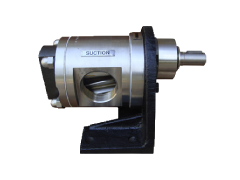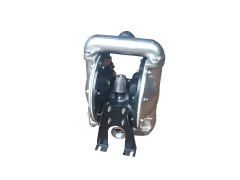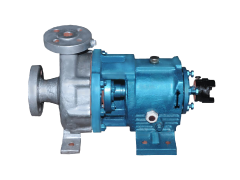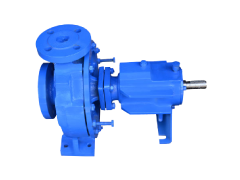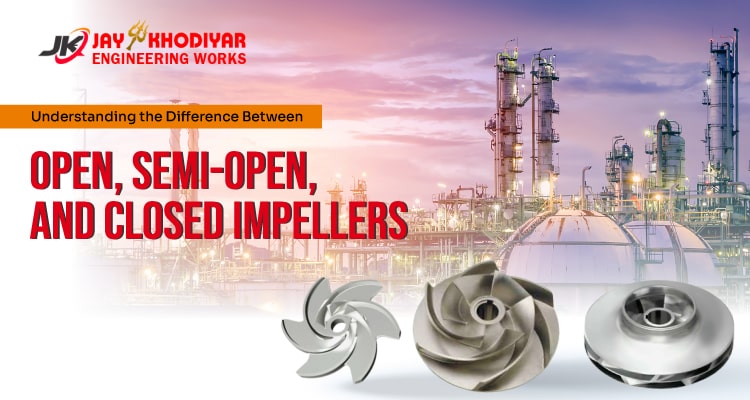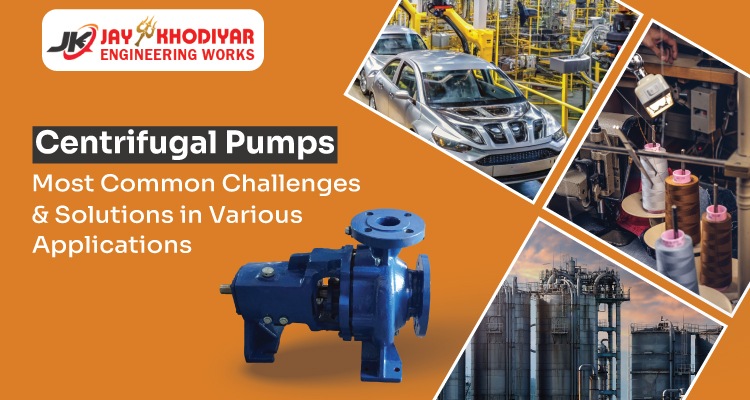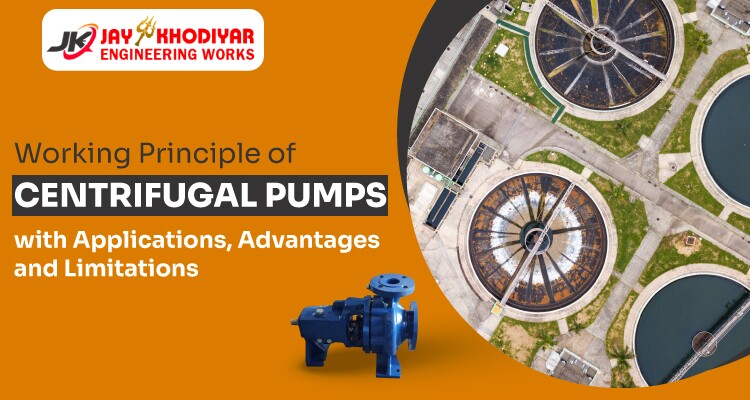
Side Suction Centrifugal Pumps – Everything You Need To Know
August 23, 2023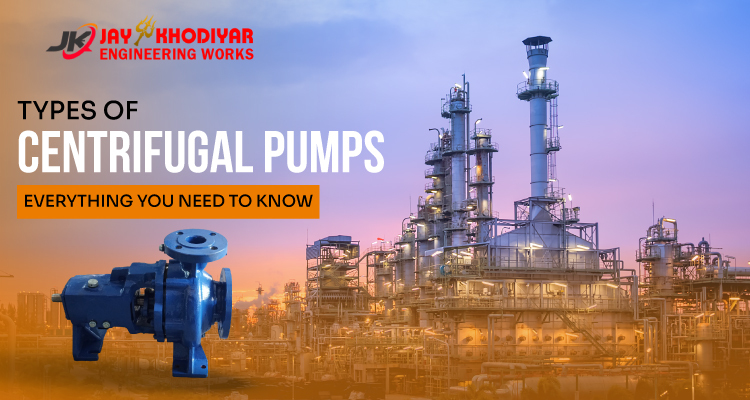
Types of Centrifugal Pumps – Everything You Need to Know
October 4, 2023Introduction
Impellers are rotating devices designed to alter the flow and pressures of liquids, gasses, and vapors. Impellers consist of various vanes- often blade - shaped - arranged around a short central shaft. When the shaft and vanes rotate - they suck in fluids or gasses and impel them out the other side.
These impellers are typically found in - and are integral components of - centrifugal pumps, agitation tanks, washing machines, and other devices requiring fluids or gasses to move in a specific direction. As a driven rotor, it increases the pressure and flow of a fluid.
The design of the impeller greatly influences the performance of the pump and the type of fluid that can be pumped. The shape, number of blades, dimensions, and rotational speed have the major influence on the pump head, capacity and the ultimate efficiency of the centrifugal pump.
Types of Impellers
There are several types of impeller, each of which offer different performance characteristics that make it more or less suitable than others for a particular application. Impellers are selected with purpose and are dependent upon the application.
Given the vital part it plays in centrifugal pump’s operation, you can see why type and size of the impeller is an important factor in pump specification.
But what exactly are the differences and when do you choose which?
Let’s cover just that!
Impellers are classified in three types;they are:
1) Open Impellers
2) Semi-open Impellers
3) Closed Impellers
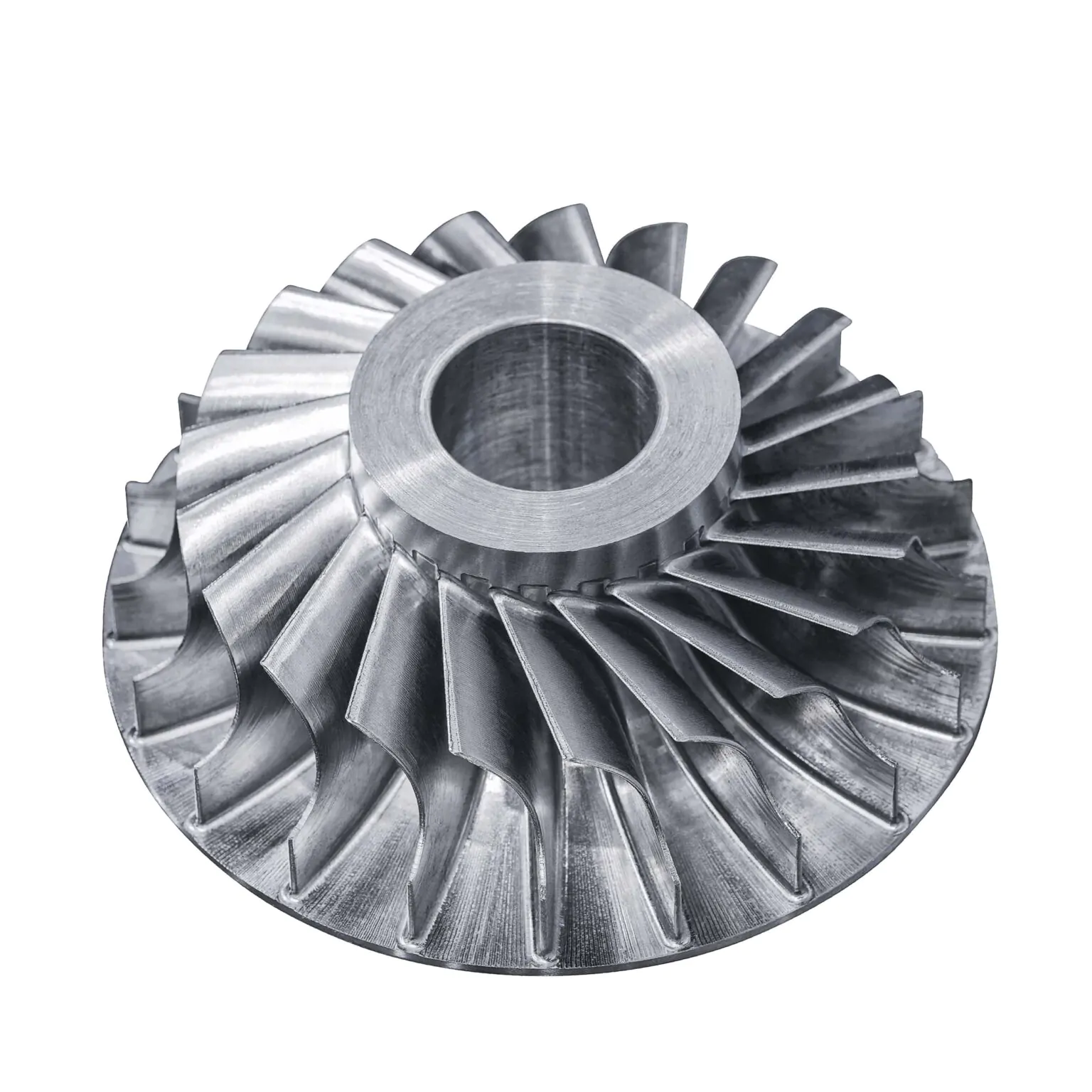
Open Impellers
Open impellers are named due to the vanes open on both sides. Open impellers are structurally weak, as its vanes do not support either side. There are no walls surrounding vanes which make it weaker. The vanes of the impeller are connected to the center hub without any attachment.
These impellers are effectively used in low-cost and small pumps, in which impellers rotate between two slide plates, between the stuffing box head and the suction head. These pumps are smaller and less capable of reducing the breaking vanes.
Advantages of Open Impellers:
- Easy to install and faster to remove for clean.
- Does not block easily.
- Vane alteration is possible.
Disadvantages of Open Impellers:
- Least efficient.
- Do not have wall, shrouds.
- Only clear liquid can pass through.
Semi-open Impellers
Its name is known as semi-open impeller because this type of impeller’s vanes are fixed on one part of the shrouds. Very few vanes are present in these impellers, but these lengths are greater than open impellers. These impellers have a back-wall shroud that adds strength to the vanes, while remaining open on the other side.
They are somewhat of a middle ground between open and closed impellers in terms of efficiency and NPSHr, making them suited to medium sized pumps with a small amount of soft solids. It’s important to note with semi-open impellers that the clearance between vanes and the pump casing needs to be small, as if too large slippage and recirculation will occur.
Advantages of Semi-open Impellers:
- Widely used with liquids or products that have liquid.
- High efficiency than an open impeller.
- Ability to pass solids.
Disadvantages of Semi-open Impellers:
- Has no front shroud.
- High maintenance
- Discharge pressure
Closed Impellers
Now that you’ve read about the open and semi-open impellers, you can probably guess that a closed impeller has enclosed at both front and back, providing maximum strength. They have low net head positive suction heads required and provide more efficient flow.
The design of the closed impeller is very complicated. Expensive design due to their dependance on close clearance wears rings to reduce axial loads and helps to maintain efficiency.These impellers are prevalently used for those places where there clear liquid comes into play. They are least capable of the solids and are difficult to clean if they become clogged.
Advantages of Closed Impellers:
- Increases the life of bearing.
- Increased efficiency.
- Compensate for thermal growth.
- Suitable for volatile fluid.
Disadvantages of Closed Impellers:
- Unadjustable once the wear ring doubles.
- Limited choice of speed.
- Difficult to modify to improve its performance.
- Maintenance and inspection canon.
Difference between Open, Semi-open, and Closed Impellers:
| Open Impellers | Semi-open Impellers | Closed Impellers | |
| Construction | Design is simple, and construction is very easy | Design is simple, and construction is easier than a closed impeller | The construction and design of this impellers are complicated |
| Speed choice | Wide range of specific speed choices | Wide range of specific speed choices | The choice of specific speed is limited |
| Manufacturing cost | Least cost | Least expensive | Very expensive |
| Strength | Least strength | More strength than open impellers and least strength than closed impellers | Maximum strength |
| Adjustment for impeller | Adjustment possible | Adjustment can be possible | No adjustment is possible |
| Efficiency | Efficiency can be maintained through impeller clearance adjustment | Efficiency can be maintained | Initially, the impellers are very efficient, but its efficiency will loose as span passes |
Increase the Pump Performance!
The pump impeller might be the reason for decreased performance of the pump. It might be caused due to the wrong rotation direction of the impeller or a blockage. Jay Khodiyar Pumps has expertise in manufacturing the high-performance and more efficient pumps and impellers that suit your different needs of application. Contact us for your unique pumping applications!







